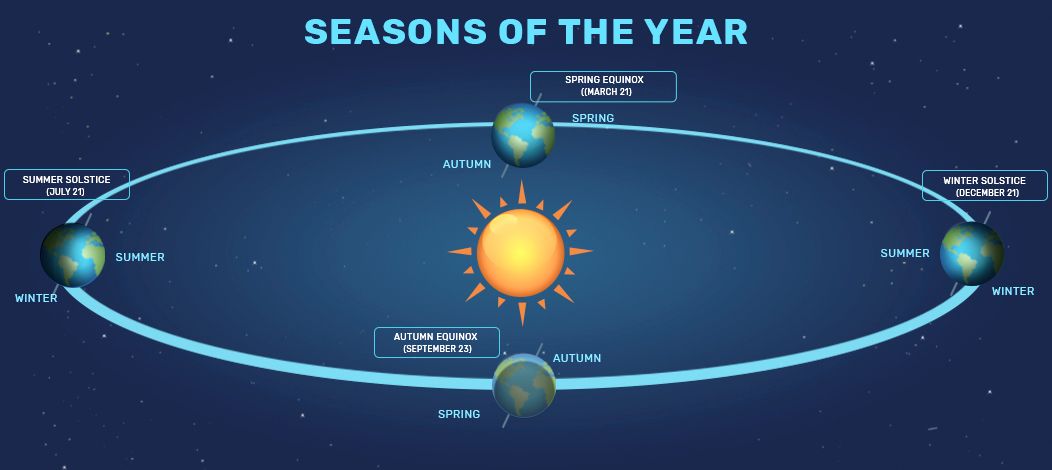Seasons of the year
Why do seasons of the year occur?
The seasons are produced by the inclination of the axis of the earth's rotation, relative to the plane of its orbit relative to the sun. The seasons of the year are 4 and last approximately 3 months: Summer, Winter, Spring, Autumn. As the axis of the earth is inclined causes that when the north pole approaches the sun during the Summer occurs the opposite in the south pole, therefore, when in the northern hemisphere it is Summer in the southern hemisphere is Winter, when in The northern hemisphere is Autumn, in the southern hemisphere is Spring and vice versa.
There are four main categories for dividing the year into stations:
- Astronomical method: based on the astronomical events of the earth with respect to the sun.
- Meteorological method: based on climatic events.
- Traditional method: based on solar radiation.
- Phenological method: based on the changes produced in nature.

Weather Stations
North Hemisphere
| Spring: | March 1 to May 31 |
| Summer: | June 1 to August 31 |
| Autumn: | September 1 to November 30 |
| Winter: | December 1 to February 28 |
Southern Hemisphere
| Spring: | September 1 to November 30 |
| Summer: | December 1 to February 28 |
| Autumn: | March 1 to May 31 |
| Winter: | June 1 to 31 August |
Astronomical Stations
North Hemisphere
| Spring: | March 21 to June 20 |
| Summer: | June 21 to September 20 |
| Autumn: | September 21 to December 20 |
| Winter: | December 21 to March 20 |
Southern Hemisphere
| Spring: | September 21 to December 20 |
| Summer: | December 21 to March 20 |
| Autumn: | March 21 to June 20 |
| Winter: | June 21 to September 20 |
Print information about the stations
Print or download this information in pdf or jpg format

